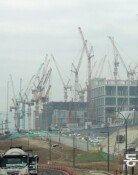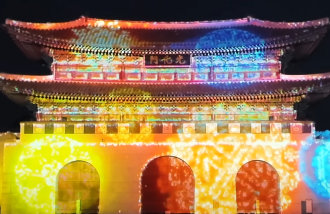[Opinion] The Han River Suicides
[Opinion] The Han River Suicides
Posted June. 14, 2004 22:59,
The spot most sought out by those who have decided to end their lives in Paris, France is the Eiffel Tower. Nicknamed suicide magnet, the tower was host to 339 suicides before plain-clothed patrol forces at the tower were augmented and high railings installed. The Tower of London in England and the Empire State Building in New York also boast high suicide rates. The Golden Gate Bridge in San Francisco, built in 1937, had already seen 500 jumpers tumble to their deaths by the time security cameras were installed in its vicinity and the police began patrolling its length.
▷So why do people flock to famous buildings and landmarks like the Eiffel Tower for their last goodbyes in this world? A significant number of those who jumped from the Eiffel Tower are known to have kept newspaper clippings reporting previous suicides that occurred there. Some people explain the impulse by interpreting suicides in public places as a theatrical act: a potential suicide, by opting for such a spot, declares to spectators and news viewers, You are responsible for what is about to happen to me. After all, a stage actor once said that he found it difficult even to die without an audience.
▷More and more people are committing suicides by jumping into the Han River. An ex-construction company president, a governor, a mayor, and now, a thirty-something food industry entrepreneur who made and sold bad dumplings. The police supposedly beefed up patrol around the area, but its doubtful how much they can actually prevent. Some psychologists interpret the recent wave of suicides in the Han River as something analogous to Japans samurai-based seppuku (or hara-kiri) culture. Samurais who were defeated in battle believed that in taking their own lives, they defended their honor by preempting any outrage or humiliation the enemy might inflict on them. Death before dishonor.
▷Why did these recent suicides choose the Han River? What is it that they wanted to say to the masses? Martin Monestier, who has written on the history of suicide, found that people who jump to their deaths, whether into rivers or off of buildings, seem to take more care in choosing the location than those who opt for other methods. Were they trying to say that they were taking all of the responsibility with them? Did they find it impossible to endure the social disgrace that had fallen on their shoulders? Its hard to tell what the dead might have wanted. Nonetheless, one thing seems clear: these were tragic losses that occurred in the process of Koreas transition to a more transparent society.
Hwang Ho-taek, Editorial Writer, hthwang@donga.com







